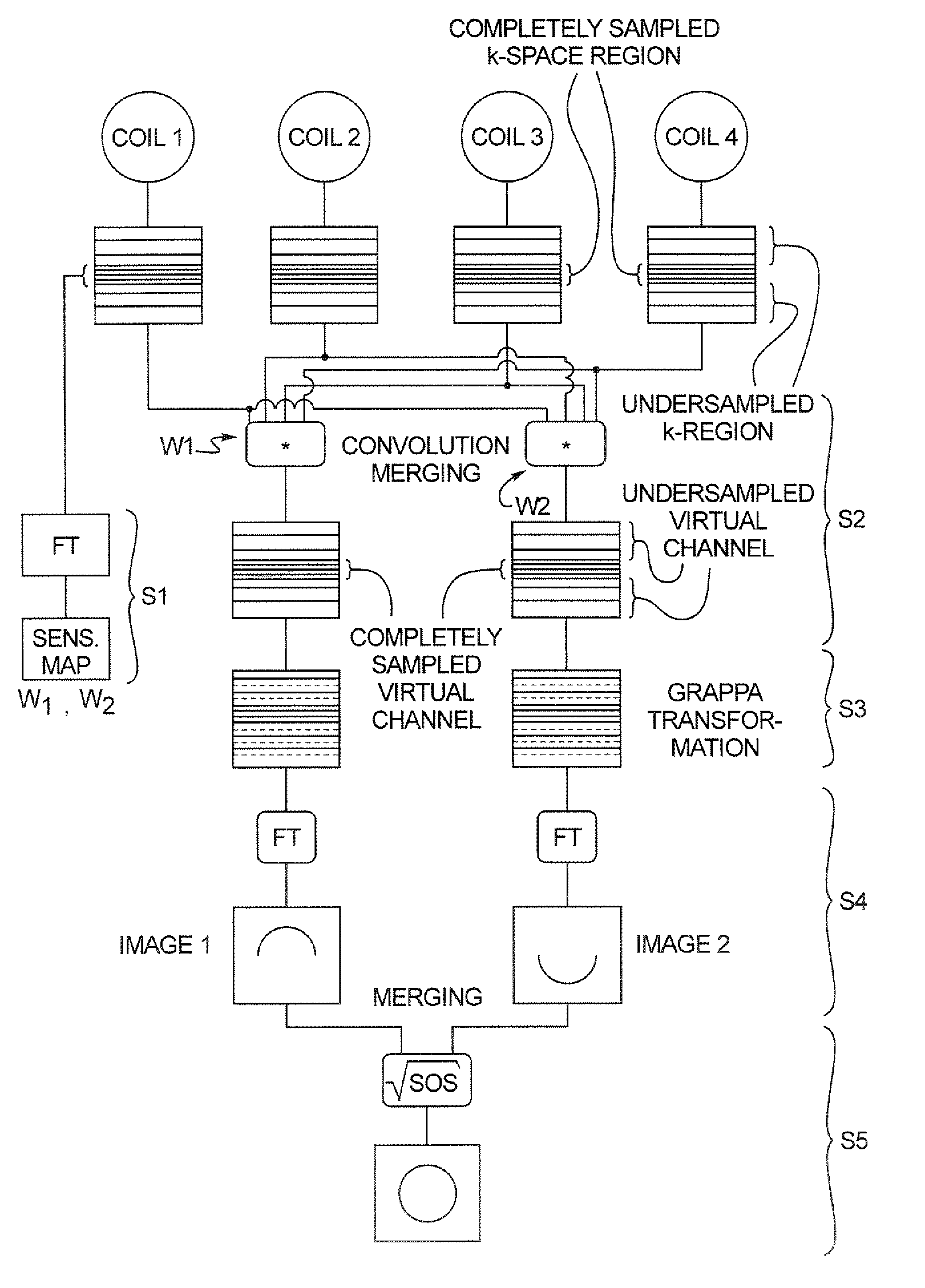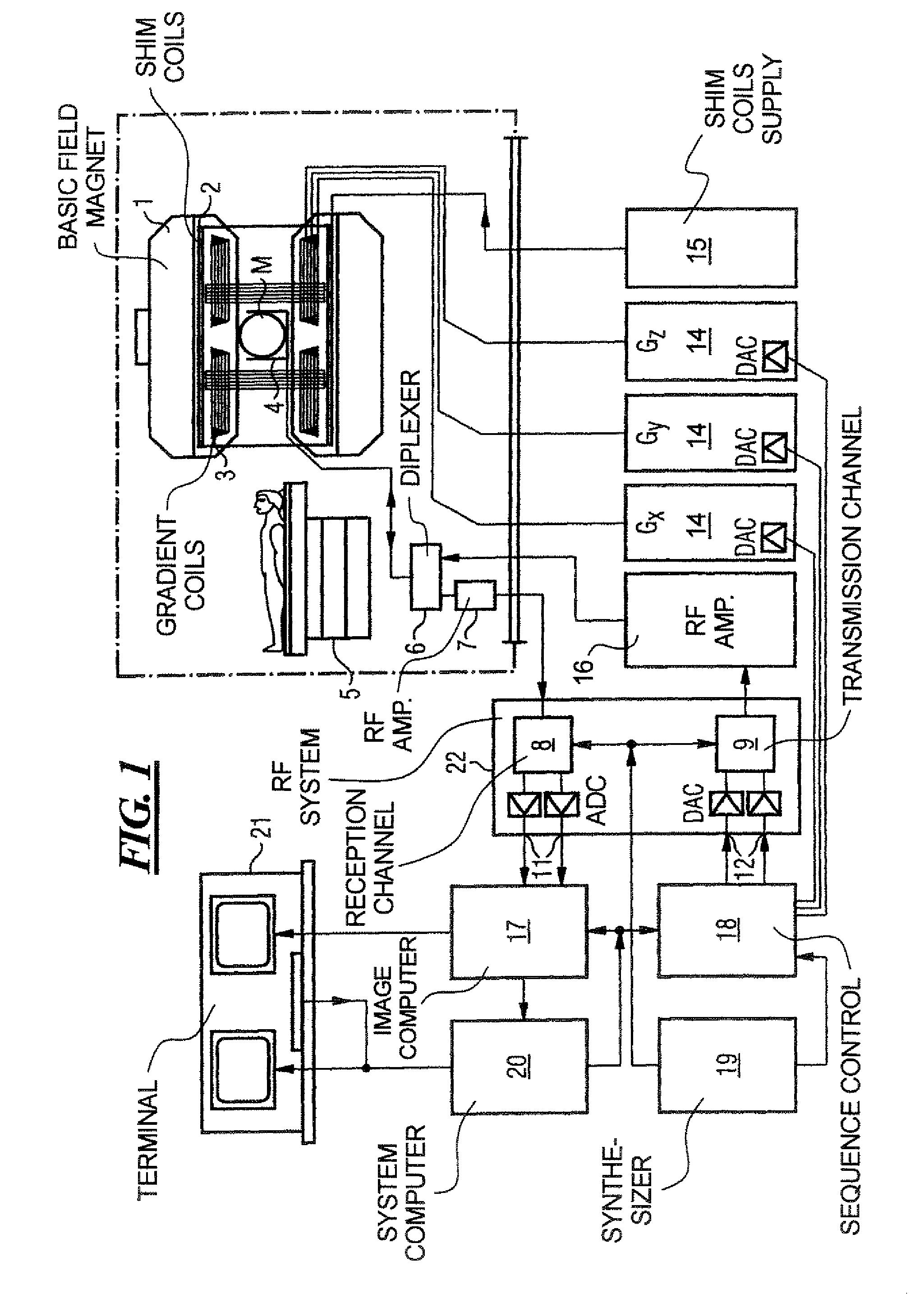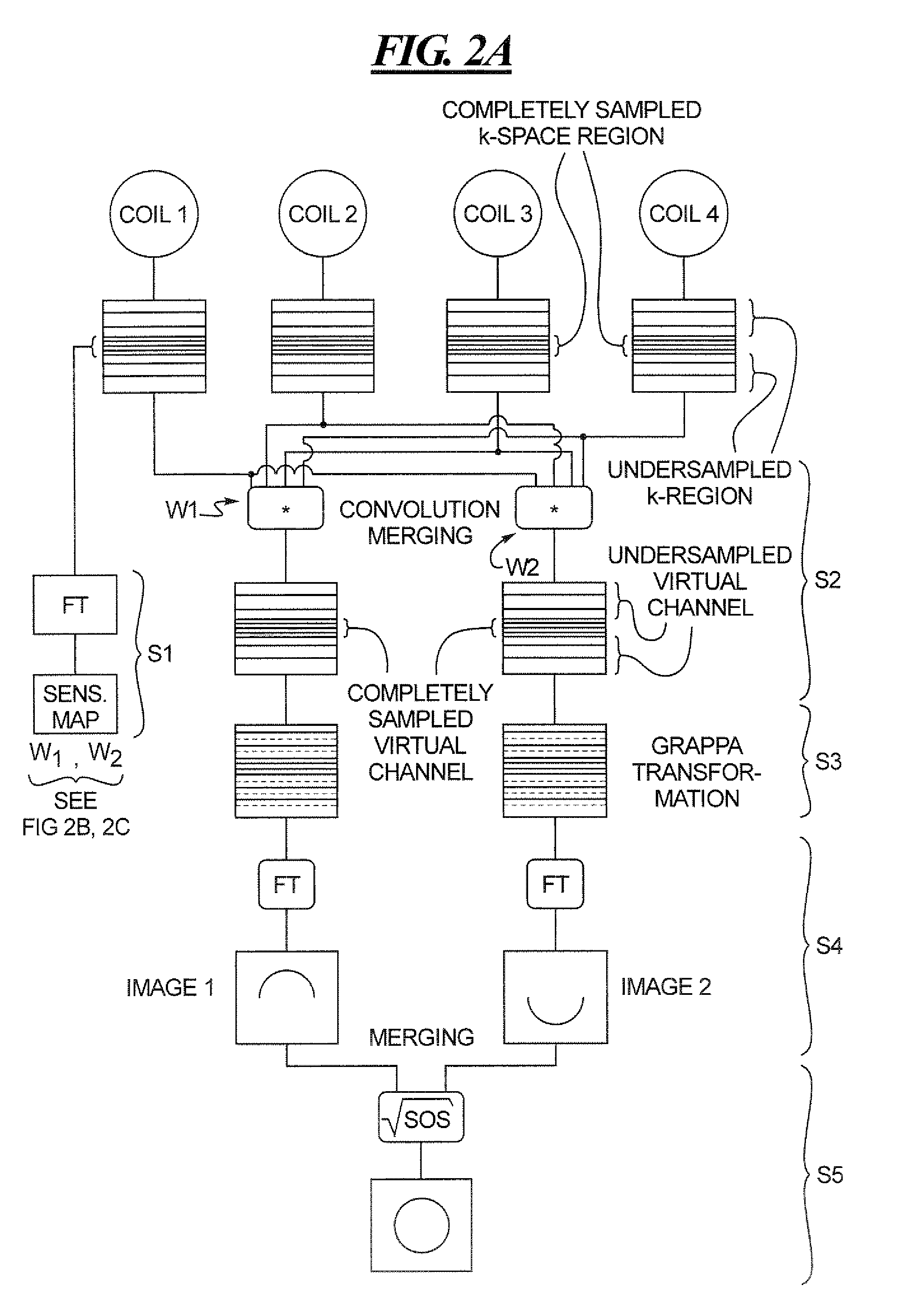Magnetic resonance parallel imaging method with K-space sensitivity encoding
a parallel imaging and magnetic resonance technology, applied in the field of magnetic resonance parallel imaging method, can solve the problems of not being able to detect the sensitivity using the technique of fully sampling in low frequency regions, the sensitivity distribution of the conventionally determined coils has a relatively large error, and the least square solution no longer has the features of optimum snr and optimal solution, and achieves low image artifact, high image reconstruction speed, and optimized snr
- Summary
- Abstract
- Description
- Claims
- Application Information
AI Technical Summary
Benefits of technology
Problems solved by technology
Method used
Image
Examples
Embodiment Construction
[0035]The discussion below presumes a knowledge of the SENSE and GRAPPA pulse sequences. Details of the SENSE sequence can be found in Prüssmann et al., “SENSE: Sensitivity Encoding for Fast MRI,” Magnetic Resonance in Medicine 42(5), pages 952–962 (1999), the teachings of which are incorporated herein by reference. Details of the GRAPPA sequence can be found in U.S. Pat. No. 6,841,998, the teachings of which are incorporated herein by reference.
[0036]FIG. 1 is a schematic illustration of a magnetic resonance imaging apparatus operable using KSENSE according to the present invention. The arrangement of the components of the magnetic resonance imaging apparatus is the same as that of a conventional magnetic resonance imaging apparatus, but it is operable in a non-conventional manner, as described below. A basic field magnet 1 generates a strong, time invariant, basic magnetic field that polarizes, i.e., aligns the nuclear spins in the zone of the object, such as a part of the human b...
PUM
 Login to View More
Login to View More Abstract
Description
Claims
Application Information
 Login to View More
Login to View More - R&D
- Intellectual Property
- Life Sciences
- Materials
- Tech Scout
- Unparalleled Data Quality
- Higher Quality Content
- 60% Fewer Hallucinations
Browse by: Latest US Patents, China's latest patents, Technical Efficacy Thesaurus, Application Domain, Technology Topic, Popular Technical Reports.
© 2025 PatSnap. All rights reserved.Legal|Privacy policy|Modern Slavery Act Transparency Statement|Sitemap|About US| Contact US: help@patsnap.com



